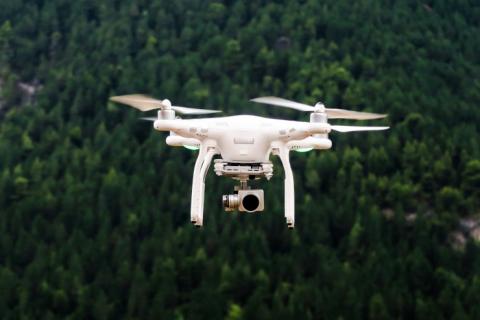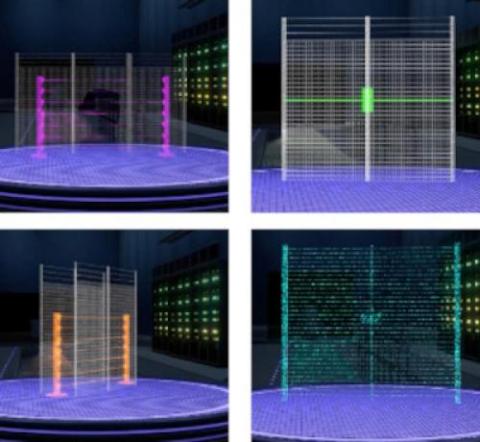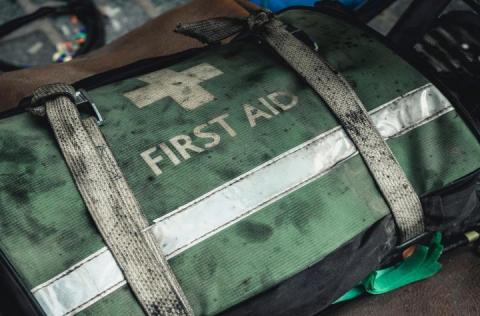
New Animation - Lockdown at sites
NPSA have produced an animation which discusses the application of lockdown at sites.It explains that lockdown can be an effective measure to reduce casualties and fatalities. It discusses the need to design lockdown of a site and the complexities of lockdown management and offers options of the types and ways to lock down which ensures acting fast can save lives.
This animation is part of a series of terrorist incident films for organisations and businesses and should be used as a discussion piece about the application of lockdown at your sites .
It focuses on lockdown of a site. Lockdown should only be implemented if that is the best course of action
For further guidance search “MTA” on NPSA website at: www.npsa.gov.uk
Lockdown can be an effective method of keeping people safe, but it is not suitable for every site or attack method.
During a Marauding Terrorist Attack most deaths will occur within the first few minutes. By instigating a lockdown, the number of casualties can be greatly reduced.
You must know your Lockdown procedure to ensure it can be implemented quickly when an attack is detected.
During an attack, every barrier and every second counts and it is important to keep valuable distance between attackers and innocents.
Through locking down you are able to delay attackers, help innocents escape, prevent people from putting themselves into an attacker’s path.
The larger and busier your site is, the greater the complexity of implementing lock down becomes. Familiarity with the lockdown options at your site is vital.
Lockdown is typically most useful when an attack begins outside of your site, where you can delay or prevent any attackers gaining access. But there are lockdown options to implement even when an attack is underway inside a site.
Types of Lockdown
One way lockdown
A One Way Lockdown can be a strong choice. Doors are locked on one side, but can be opened from the other side which keeps attackers out and can prevent the risk of crush or becoming trapped by an attack.
Good announcements and communication from the Security Control Room is paramount to
provide information about the location of attackers. Announcements can also provide an update on the lockdown status of the building to those inside.
This is to prevent locked doors being inadvertently opened allowing attackers to access the safe areas.
Two Way Lockdown
A Two Way Lockdown, means both sides of a door are locked and no one can exit or enter through the door.
Two way lockdown is achieved either by manually locking down the doors or by disabling the Automatic Access Control systems.
Once a two way lockdown is implemented, the function to leave and enter is disabled. People remain in the area that they were in when lockdown was initiated.
Implementing a two way lockdown needs very careful planning. You are taking away people’s right to leave and locking people into a specific area of your building.
You also do not want a crowd to flee towards an exit they cannot use. This could potentially cause alarm or a crush.
If attackers gain entry to the locked zone, people wishing to escape will be unable to as they are trapped by the locked door.
Partial Lockdown
By closing entrances, typically the main entrances of a site, an attacker can be kept within or out of specific areas. Allowing other areas or routes within the site for people to escape.
This is a Partial Lockdown.
Zonal Lockdown
Detecting an attack early means you may be able to lock pre-determined areas within your building thus allowing people to safer areas. Some sites may be able to lock dedicated zones such as floor plates in an office block.
However, a complex system of zones that are individually controlled is impractical to manage in the fast pace of a marauding terrorist attack.
Partial and Zonal lockdowns need to be monitored by the Security Control Room and will need to be reactive to the movements of the attackers.
Good communication with the ground security team is vital to track the actions and whereabouts of the attackers in real time. We need to show animation of SCR and Comms with security on ground.
An attack is a fast paced and intense situation, so dynamic lockdowns should be practical and achievable, with reasonable expectations of what can be expected of security staff.
Ways to lockdown
Centralised Lockdown Management
A centralised lockdown system benefits from being easy and fast to implement.
This requires a security control room with access to Automatic Access Control Systems to lock or unlock doors remotely through the one centralised system.
It is beneficial to also give front-line personnel the ability to initiate lockdown.
This could be a panic button on the ground level to help speed up the instigation of any lockdown.
Manual Lockdown
A manual lockdown relies on individuals to lock the doors and barriers. It is important that this should be safe, easy and achievable and you need to check it is physically possible for every barrier to be locked down. A Manual lockdown is only practical where barriers may be locked quickly and from a safe location.
Staff should not put themselves at risk to lock any doors or barriers and should always be putting distance between themselves and any attackers, never moving towards an attack.
Thumb turn locks on doors are recommended.
These are quicker and easier to use and require minimal training and they avoid the use of keys, which may not be immediately available.
Door locks should be placed in easy to access positions for example in the middle of the door, not in hard to reach areas such as at the top or bottom of a door.
Any shutter and door controls should be located away from the door so that they can be operated safely.
Wherever possible centralised and manual lockdowns should be monitored by the security control room to ensure lockdown integrity is maintained.
Lifts and Escalators
If it is possible - lifts and escalators should also be locked down. This can prevent attackers getting easy access to other floors of the building.
However, locking down lifts and escalators is only feasible when they are controlled by a centralised building management system, operated by the security control room and should not be a task expected of ground security staff as it could expose them to danger.
Lockdown Management.
Whatever Lockdown you deploy, it needs to be continually monitored and managed by the Security Control room.
Communication between ground security staff and the control room needs to be maintained at all times, and up to date information shared with the emergency services.
Clear and consistent announcements should be used throughout the lockdown to inform those inside as to the current status of the site and location of the attackers. But be aware that an attack is highly stressful, and people may ignore these announcements.
Designing Your Lockdown
Every site is different and faces its own challenges when designing and implementing lockdown.
You need to consider:
What is reasonably possible and how many access points, do you have within you site?
What barriers and ways of locking them do you have at your site?
Can they be locked manually or centrally and are staff trained to lock them?
How much time is needed to spend time training KEY staff, and briefing ALL staff, on how they should respond to a lockdown.
If a crowd were to attempt to leave using a locked exit, could and should it be opened?
Are crushing injuries a risk if the door remains closed?
Attacks can cause life-threatening injuries or people may have a medical emergency whilst in a locked zone. Should these people be allowed to leave the locked area?
If a fire is started whilst lockdown is in effect, should lockdown be cancelled to allow people to evacuate?
The answer will depend on the nature of the hostile, the ferocity and the location of the fire; its ability to spread and hazards associated with toxic smoke.
What if there are marauding attackers outside the locked zones but a fire inside?
What if a fire alarm sounds, and you are unsure if it is a real or false alarm?
Lockdown can greatly reduce the number of casualties at your site during an attack.
It can control and restrict the movement of an attacker and it can put distance and time between an attacker and their intended targets.
But Lockdown can be difficult to achieve and it may not be appropriate for all sites and all forms of attack.
Because of this, lockdown must be developed, tested, exercised, rehearsed and refined to make sure that the procedure works for your site.
Acting fast will save lives.
Related page
Marauding terrorist attacks are fast-moving, violent incidents where assailants move through a location aiming to find and kill or injure as many people as possible






